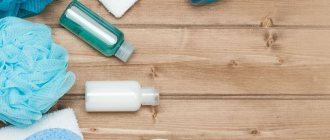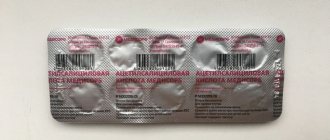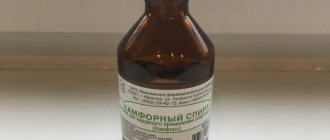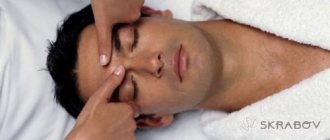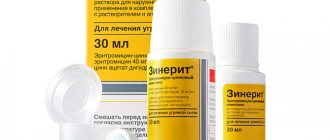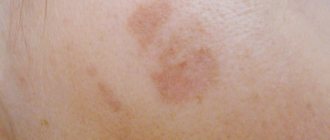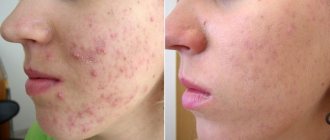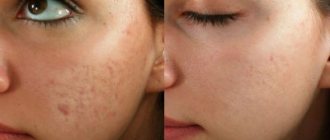Acne is inflammation of the sebaceous glands on the skin in the form of tubercles. For many people they are a real problem. But not everyone knows that there are many types of such inflammations and, accordingly, their treatment methods may differ. Blackheads, pimples, and acne most often appear on the face. These problems are serious and at the first sign it is better to consult a doctor. A dermatologist will help in this matter; he will refer you to the necessary tests and prescribe the correct treatment. Since self-medication leads to worsening acne.
Acne
Acne or acne is a disease of the sebaceous glands of the skin. As it develops, pores expand, oily skin and comedones appear. This occurs due to disruption of the process of exfoliation of dead cells and increased production of sebum. Along with fat, acne propionobacteria enter the cavity of the sebaceous gland. They are constantly present on the epidermis (in its folds). Microbial activity provokes inflammation and, as a result, increases blood flow. Therefore, swelling and redness appear near the pimple. It is better to treat an already brewing inflammation and not wait until it comes to the surface. This is done precisely, after regular treatment there will be no trace left; an unripe pimple can and should be treated. When colored pimples (blue, green, yellow) appear with acne, this indicates stagnant processes and the addition of a secondary infection. In this case, antibacterial therapy is necessary. Dry pimples can also appear on the face; they are typical for dry skin types. Such formations are much easier to remove than purulent ones, but the wound remains and there is a possibility of infection getting there.
The structure of a pimple
So where do acne come from? To begin with, we note that the skin consists of 3 layers: epidermis, dermis, hypodermis. Pimple originates in the middle layer - the dermis. At this level, the sebaceous glands malfunction more often, and its root is also located there. Mechanism of abscess development:
- Blockage of the pore (sebaceous gland) with excess sebum, resulting in the formation of a rod;
- Inflammatory process due to blockage, redness;
- Due to the ingress of bacteria, inflammation worsens and, as a result, purulent masses appear;
- The pimple has already festered and is coming to the surface of the skin.
The contents of a pimple are sebum and dead cells. This mixture gets into the pore and provokes the formation of suppuration from the inside. That is, infection, and the immune system fights this infection. As a result, pus is removed from the lower layer of skin to the surface. Purulent acne gets worse when squeezed. If you remove a pimple and do not eliminate the inflammatory process, the dermis is weakened. And this is already fraught with consequences - the constant entry of bacteria there. The body begins to fight them even more intensely and the rashes become multiple. Therefore, it is important to direct treatment to relieve the inflammatory process. If weeping pimples appear, then this is not a harmless condition.
This is a manifestation of herpes, scabies, pemphigus (viral disease), neurodermatitis or allergies. Such pathologies require urgent medical intervention, since if this is not treated, weeping acne will appear on other parts of the body, and the relapse will be even more intense. Acne with the release of clear fluid often appears in childhood.
Acne severity
To begin with, we note that acne has many faces, that is, its manifestations are varied. It all depends on the individual characteristics of the epithelium. Treatment for this disease can vary greatly from patient to patient. Therefore, the classification of acne is superficial. There are 4 degrees of severity:
- Stage I is a mild form of acne that forms on the face. It is characterized by the appearance of closed pimples and comedones, but without inflammation. This often affects teenagers and older people. At this stage, 3-6 formations are acceptable. Treatment at home is allowed;
- II degree – it is also called moderate. This stage is characterized by acne, which does not exceed 11 in number. Among them there may already be inflamed ones, their structure is different. A moderate degree of rash is often observed in women during the premenstrual period; they are typical for people of different ages;
- III degree is a severe form. There are up to 40 inflammations on the face: multiple large pimples of purulent type and their localization area is constantly growing. At this stage, you already need to seek help from doctors, since self-medication will lead to complications;
- IV degree is a complicated form of acne. At this stage, not only the face is affected, but also the chest and back. The pimples are large, purulent, and also bleeding. When light pressure is applied to them or when exposed to clothing, the top breaks through. Such acne needs to be treated comprehensively and will take a long time. Pictures and photos of such lesions can be seen on the Internet.
Which doctor should I contact?
This factor depends on the cause of acne formation:
- The dermatologist will conduct a primary diagnosis - determine the type of rash, the severity of the skin problem, and the scope of therapeutic intervention. A doctor of this profile eliminates pimples after eliminating the main cause of deterioration of the skin condition. It is possible to treat the rash and the disease that caused it simultaneously.
- If a defect on the face is caused by helminthic infestation, you need to visit a parasitologist or infectious disease specialist.
- When inflammation on the face is caused by intolerance to certain substances, you will need to consult an allergist.
- An endocrinologist helps eliminate hormonal imbalances, which helps get rid of pimples on the face.
- The gastroenterologist will create the correct diet, thanks to which you can avoid the reappearance of inflammatory elements on the face.
- If your skin becomes problematic only on the eve of your period, you need to make an appointment with a gynecologist.
- When a rash on the face is a consequence of stress, irritability, a tense situation in the family or at work, it is advisable to visit a neurologist.
- With the assistance of a cosmetologist, you can choose products for safe skin care.
If pimples appear while taking medications, you need to consult the doctor who prescribed these medications. The specialist will reduce the dosage of the medication, replace it with an analogue, or cancel the prescription altogether.
Choose a specialist, read reviews and make an appointment with a dermatologist online
Non-inflamed and inflamed acne
Non-inflamed pimples are comedones, which have only a stem. They differ in appearance in that there is no redness or swelling. They do not cause such discomfort as ulcers and are not painful. There are such non-inflamed acne:
- Open comedones are the so-called blackheads. They appear when the upper part of the pore becomes clogged. At the initial stage, sebum gets into the pore and it looks like a white dot, but over time a dense core forms, the contents darken, harden and a dark dot forms on the surface of the pore;
- Closed comedones are whiteheads. They appear when a pore becomes clogged under the skin. The top layer of skin is not damaged. Most often they look like protruding tubercles, and sometimes they are not visible outwardly, and a closed comedone can only be felt by palpation.
Inflammatory acne includes:
- pustules;
- papules;
- nodes;
- cysts.
A papule is a nodule reaching 1-3 mm in diameter, has clear boundaries and rises above the skin. They look like balls of red, pink or bluish-purple colors. It is also characterized by suppuration and swelling. The papule develops as a result of inflammation in a closed comedone. A pustule is a cavity pimple containing pus. They arise both independently and at the site of the papule when pathogenic microorganisms have developed in it. Pustules are larger in nature than papules - 1-10 mm. The shape of these formations can be cone-shaped, spherical or flat. The apex is thin and white; when lightly pressed, it bursts and pus is released. There is always a red, inflamed halo around the purulent tip. If the contents of the pustule are green, blue or yellow, this indicates the development of an infection. Sometimes there are even blood impurities if inflammation of the vessel wall occurs. Nodules are large papules that extend throughout the entire thickness of the skin. They reach 1-3 cm in diameter. These formations are painful and leave a stain on the skin, and sometimes atrophic scars. With severe inflammation, there is a possibility of cyst formation. This formation is filled with pus. Quite often, several cavities merge into one cyst. Upon palpation, you can feel a dense structure. Such formations simply do not go away and always leave a mark on the skin.
Acne skin under a microscope
Clinical classification
In medicine there is a clinical classification of acne:
- baby acne;
- juvenile acne;
- adult acne;
- exogenous acne.
Children's
Baby acne sometimes appears in newborns. The reason for their appearance is mainly the effect of maternal hormones during the period of intrauterine development of the fetus, since a woman experiences a hormonal crisis during this period. Acne in newborns looks like closed comedones. They are localized on the cheeks, nose, forehead and chin and go away on their own within 2 weeks. Some babies have several, while others may have multiple. Acne appears in children as young as 3-6 months. They can develop into a protracted, severe form of acne. And this indicates the manifestation of a dangerous congenital disease.
Youth
Juvenile rashes are also called acne vulgaris. They appear in adolescents aged 12-16 years. In most cases, this type of acne goes away within 20 years. Juvenile acne is:
- Comedones;
- Papulopustular acne is comedones that have become complicated and become inflamed;
- Nodular cystic acne. Such acne usually takes a long time to mature, several years. And during healing, scars always remain;
- Acne fulminans is a complication of papulopustular or nodular cystic acne. In this case, they can appear on the trunk and limbs; they are often absent on the face. At first it appears as patches of erythema with pustules, and then ulcers begin to appear. When healing occurs, keloid-type scars form. Most often, these formations appear in boys from 13 to 18 years old.
Most often, fulminant acne occurs with various severe diseases of the digestive tract. This is ulcerative colitis, Crohn's disease, etc. And also from long-term use of certain medications: androgens, tetrocyclines, etc.
Adults
Acne in adults can appear in adulthood or grow out of the juvenile form. According to statistics, 5% of adults develop acne at the age of 40-50. There are these types of acne in adults:
- Late. This form grows out of the juvenile form, namely, if the acne has not disappeared before the age of 25. Quite often, such rashes appear in women before menstruation. But there are also many cases when there are constant rashes on the skin. The cause of late acne in women can be serious diseases: polycystic ovary syndrome, tumor on the ovaries or adrenal glands, etc.;
- Inverse. Pimples of this type are localized in the armpits, pubic and perineal areas, navel, etc. That is, this is an inflammatory process in the apocrine or large sweat glands. Inverse acne looks like large nodules, quite painful, which open when damaged. Pus or a mixture of pus and blood is released from them;
- Inverse. Such acne can merge, which happens quite often, and the affected area increases. They are characterized by a chronic form of the course, that is, frequent relapses occur and each time a larger area of the lesion is captured. The healing process is long, after which scars remain, and the formation of fistulas is also possible. People who are overweight, as well as when wearing tight clothing and scratching acne-affected areas, are predisposed to them;
- Bodybuilding acne or steroid. The cause of such acne is the use of steroid hormones (glucocorticoids, anabolic steroids, androgens). These drugs promote sebum secretion. It is characteristic of such rashes that all pimples develop in the same way, that is, at the same stage, and also that there are no comedones;
- Pile up pimples. These are severe rashes. They appear in people against the background of various diseases, most often seborrhea and polycystic ovary syndrome in women. This condition can last from adolescence. If this type of rash is not treated, it will develop over a long period of time. There are times when one education does not take place for a year or more. Accumulated pimples look like nodes and cysts, which merge and form fistulous tracts. In most cases, they mature on the body, namely, on areas of the skin that are affected by seborrhea. You can also observe these pimples on the limbs, back and stomach. To speed up healing, you need to carefully treat the entire affected area. During healing, scars form;
- Skin pyodermatitis. In most cases, it appears in women from adolescence, from 15 years to 40 years. Inflamed pimples (papules, cysts and nodules) appear only on the face and there are no comedones;
- Exogenous acne is a rash that appears due to exposure to the skin, inhalation or ingestion of various substances. They can be: toxic (clogging of pores with various chemicals, and, as a result, the formation of acne); cosmetic (improper use of cosmetics, often face creams); solar (occur under the influence of high temperatures).
- Acne that appears from mechanical stress. In this case, inflammation can form at the site of mechanical pressure or friction. That is, it could be due to a headdress that rubs, a cast, if a person constantly touches and rubs his face, or with excessive sweating. As a result of such mechanical damage, the pores become clogged and the inflammatory process begins.
Often this type of acne occurs in women who try to remove even minimal pimples on the skin, thereby causing damage.
Additional views
You can also highlight acne:
- Hormonal type - they occur due to hormone imbalance. Changes in hormonal levels can occur during the premenstrual period, or due to improper functioning of the endocrine system. These acne may also appear after taking certain medications (contraceptives, etc.);
- Due to reduced immunity, acne also appears. When the body's defenses decrease, intestinal diseases appear. It is with intestinal problems that rashes often appear;
- Stress type. Nervous stress always negatively affects the immune system. As a result, acne appears. It is this fact that explains why, before important events, a person develops a pimple in the most noticeable place;
- With hyperkeratosis. Since the skin becomes overfilled with waste, and the stratum corneum thickens significantly;
- Rashes from excessive hygiene. No matter how strange it may sound, excessive cleanliness leads to inflammation. This happens because antibacterial skin products with frequent use make it dry, which means there is no protective layer. The infection very quickly penetrates the pores and infection occurs. Many people, saying that they have already suffered from acne, do not even suspect that improper care leads to this.
What to do if rashes occur due to excessive hygiene? It is better to consult a dermatologist who will tell you how to properly care for your specific skin type and how often you need to use skin care products.
Does not apply to acne
There are several types of acne that are not classified as acne: rosacea or rosacea, pyoderma, gram-negative folliculitis and furunculosis. These are inflammatory diseases that require mandatory consultation with a doctor. Sometimes a patient needs to undergo consultations with several specialists and undergo the necessary tests.
- Rosacea appears as red, inflamed pimples with a white tip. This disease occurs due to problems with the endocrine system, vascular network, and also if there is a skin mite;
- Furunculosis is an inflammation of the hair follicle that occurs due to Staphylococcus aureus;
- Gram-negative folliculitis is a pathology that is activated after treatment with antibacterial drugs.
How to get rid of internal pimple
If there are a lot of subcutaneous formations and they do not go away for a long time, it is unlikely that you will be able to get rid of them on your own. In such cases, consultation with a dermatologist and special therapy are necessary. The same applies to such an unpleasant manifestation as acne on the face located deep under the skin, the treatment of which must be carried out under the supervision of a specialist.
However, if the pimple is single and has appeared recently, you can try to remove it without seeking medical help by using available pharmacy and home remedies. How to remove the subcutaneous tissue? Such pimples “mature” for a long time, over several weeks, so attempts to squeeze them out will be unsuccessful. How to treat the skin to speed up this process and prevent complications from developing?
Ointment
An excellent remedy for combating subcutaneous skin are Vishnevsky ointment, Levomekol, and zinc ointment. How to pull out a pimple using these drugs? Ointments should be applied to the affected areas at least 2 times a day. In addition, compresses made from ichthyol ointment have a good effect, drawing the contents of the subcutaneous tissue out. It is recommended to apply them at night.
READ ALSO: Increased testosterone, suffered from acne!
Cream for subcutaneous acne
When treating subcutaneous rashes, creams with an antibacterial and healing effect are helpful, allowing you to quickly stop the inflammatory process and accelerate tissue regeneration in the affected area. The most effective products in this category, recommended for the fight against subcutaneous skin, are the creams “Baziron”, “Differin”, “Skinoren”, “Klenzit-S”.
Treatment with folk remedies
Simple folk recipes that are available for use at home will help eliminate subcutaneous formations:
- Aloe compress. It helps well to get rid of such an unpleasant phenomenon as a long-lasting purulent pimple that cannot burst on its own. Cut an aloe leaf, apply it to the site of inflammation and secure with a bandage. It is most convenient to apply the compress at night.
- Tea tree oil. Apply it to your pimples every 3-4 hours for a few days until you notice improvement.
- Mask of oil and garlic. Lubricate the problem area with vegetable oil, and then precisely apply chopped garlic to the area of inflammation and place gauze soaked in hot water over it. Leave on for 20 minutes and rinse off.
Squeezing pimples
Doctors say that squeezing pimples is strictly forbidden. Since after this a wound is formed, which can easily become infected. And secondary infection occurs. It is even possible to develop a complication – furunculosis. This is a dangerous condition, as large areas of the skin are affected, becoming covered with inflamed purulent acne. Staphylococcus aureus provokes the development of furunculosis. Despite this, teenagers still resort to squeezing, as they strive to make their faces more beautiful, not suspecting that they are only making things worse. When squeezing, not only a wound is formed at the site of the pimple, but also microscopic scratches and damage, in the place of which new inflammations appear. Also, cleansing your face on your own can cause rupture of the sebaceous glands. And then the contents of the pores spread into the dermis. As a result, a subcutaneous pimple may occur, which is painful. Most often, scars and red spots after acne remain if the acne has been squeezed out.
Only an integrated approach in the treatment of acne is effective. Complex therapy includes anti-inflammatory, antihistamine, and often antibacterial agents.
Prevention measures
You can prevent the appearance of acne on your face using the following measures:
- cleanse and moisturize the skin daily;
- exfoliate at least once a week to remove dead particles of the epidermis;
- minimize the use of foundation and powder;
- change towels and bed linen frequently;
- lead a healthy lifestyle.
See how to use aloe for acne. How to use tar soap for acne on the face? Find out further.
What hormonal pills should I take for acne?
The answer is here. Acne on the face is considered an unpleasant occurrence and may be accompanied by unpleasant symptoms.
In order for the treatment to be effective, it is necessary to seek advice from a specialist. Self-medication may not only fail to eliminate a cosmetic defect, but may also further worsen the condition of the skin.
Causes of rashes
Factors in the development of acne can be varied. In view of all of the above, we can say that acne appears due to:
- allergies;
- adolescence;
- hormonal changes in the body;
- long-term use of steroid drugs;
- before and during menstruation;
- specific climatic conditions;
- long periods of time in the solarium;
- stressful situations;
- excessive disinfection of the skin;
- bowel dysfunction;
- hyperkeratosis.
In teenagers, acne is normal, as hormonal changes in the body occur and during this period the amount of sebum increases significantly. This happens even if the skin becomes dry in the future. Also, hormonal changes occur during menstruation, as well as in pregnant women. But if acne appears in a person at the age of 30, then this already indicates problems. Most often, these are disturbances in the production of reproductive hormones. When there are any intestinal diseases, acne also appears on the skin. You may notice that the skin with such problems quickly becomes dirty. You shouldn’t dismiss psychosomatics yet. When a guy or girl does not accept his appearance and experiences various fears about his appearance, the body reacts to this.
Diet for facial rashes
Treatment of acne on the face in adults is impossible without a properly selected diet, since the diet for acne on the face is of no small importance.
For such patients, nutritionists recommend limiting the consumption of foods containing carbohydrates, especially sweets, which include:
- chocolate;
- candies;
- cakes;
- cakes;
- jam;
- honey.
At the same time it is necessary to introduce into the diet:
- sea fish;
- dietary meat;
- fruits;
- nuts;
- vegetables;
- cereals (except semolina and millet cereals);
- dairy products;
- bran.
Nutritionists recommend drinking green tea and mineral water. They are involved in flushing toxins out of the body.
Note! It is necessary to minimize the consumption of fried foods due to the presence of carcinogens in them.
It is best to cook food in a slow cooker or double boiler to preserve microelements and vitamins A, B, and E needed by the skin in the food. It is best to season vegetable salads with olive oil.
It is also recommended to follow the principles of separate nutrition.
To normalize digestion, it is recommended to drink freshly squeezed carrot juice in the morning and eat it with a salad made from carrot cake seasoned with olive oil.
Be careful! When combined with nicotine, vitamin A contained in carrots forms a poison, so smokers should be more careful.
